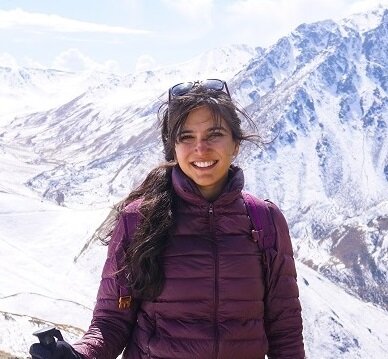To Nothingness: A Leh Ladakh Bike/Road Trip For Thoughtful Travellers
/I contemplated writing a post about my bike/road trip to Leh Ladakh (in this case a bicycle). It is hard to dismiss what is becoming of Leh in Ladakh.
The moonscape landscapes of Ladakh is at its most fragile state, where hot water is often expected by most travellers, electricity is taken for granted and where urban travellers expect the comforts of modern life as they rev up their engines to the high prairies of Ladakh.
Do I really want to post inspiring photos of Leh Ladakh? Do I really want more people crowding these places? Do I really want people who dispose their plastic wrappers impulsively from their moving vehicle when visiting Ladakh?
I realised many people will visit the place anyway from Manali to Leh and just maybe a post of how Ladakh on a road trip is not all sunshine and dreaminess may inspire people to travel with consciousness and be aware and enlightened by the landscapes and harshness of this region. Here’s a guide to Leh if you’re on a road trip and ways to explore new things.
Also Read: Cycling in India: On The Leh to Srinagar Highway
Cycling Manali to Leh India Solo As a Female In The Himalayas
On the Leh to Srinagar highway during our bike and road trip in Ladakh.
More Than Just A Road Trip to Ladakh; Thinking Sustainably
Last August, I took a ride through Leh Ladakh on a bike trip, constantly on the move, where the landscapes stood in sharp contrast to the settled, urbane and sophisticated metropolitan culture of India cities.
Unhurried, sparsely populated and the beauty of nothingness; it is times like this where you wonder how do people make a living in a place like Ladakh.
The world is divided into two extremes: those who believe in the incredible, and one of the improbable where places like Ladakh no matter how beautiful, can feel despairing as I saw a deathbed of trash in the most scenic locales.
I had questions, instant regret on being here and at the same time pure awe, admiration and respect for people who lived on the fringes of these barren plains as well while riding through this terrain.
What looked stunning from the outside was anything but from within. As an outsider, I took interest in the way monks, nuns and locals conduct their life in these frigid landscapes in Leh Ladakh.
Also Read: The Path Less Taken: Why Community-Based Tourism & Responsible Tourism Starts With You
The Stok range in the background as we cycled through the highest motorable road in Ladakh on a road trip.
Choosing Alternatives and Volunteering Where It Matters in Ladakh
Sedentary societies should take a leaf of what it is like to be humble, stay rooted to your beliefs and appreciate the ease and convenience where we have managed to get easy access to basic things in life like food, water and shelter.
I suggest on a road trip to Leh Ladakh, don’t just come for the scenery, or the hikes or the wondrous photos that will populate your feed; come to slow down, visit Leh in the off-peak season and spend time volunteering in places like:
And when you have learnt what it is like to create a livelihood over here and interact with the locals, school children, the elderly and the spiritual nuns and monks in Ladakh, take a road trip to these places and experience the otherworldy terrain of Ladakh.
Volunteering in Ladakh before your road trip offers you a better perspective of the their everyday life in this fragile region.
Finally, Taking The Road Trip in Leh Ladakh, But With A Lot of Thought
I promise you when you look at an oasis in the middle of a desert, you won’t just take a picture, but pause, wonder, question and educate yourself how agriculture in this region is different from that in other rural areas of India.
For many people it takes a whole year to get nutritious food, but over here farming season is restricted to just 4 months.
You will also have appreciation for farming, and the agriculture industry and the sight of workers who brave the extreme weather and risky work to build roads in Ladakh. Many of the labourers who build these long mountain roads are migrants from other small towns in India.
They come here from May to mid-October every year, working under the hot sun, putting in more hours than ever to provide connectivity and paved roads for hordes of people and tourists who continue to flock Ladakh.
Also Read: Cycling the Highest Motorable Road In The World, Khardung La: Breathless at 5,600m
We zigzagged through a little oasis like this on our road trip from Leh Ladakh. Farming season is only restricted to 4 months and access to nutritious foods is a luxury.
The work includes digging the soil, and carrying heavy loads of mud and stones. They work for 10 hours a day, six days a week, for a daily wage of Rs 350 to Rs. 600, depending on the task and level of experience. You will see them parked at a campsite near the road with barely-there covers to protect them from the harsh UV rays.
And again, taking a bicycle or even a bike will allow you to slow down, and appreciate the tough terrains that others go through to build the smooth stretches of asphalt that we ride on.
On the road, you’ll even come across shacks where Maggi and Lays chips are readily available and before you think of consuming non-Ladakhi foods, have a think of the end cycle of where this wrapper will be. A plastic wrapper can take anywhere from 500 to 1000 years to decompose in landfills. Do we really need it?
Taking all of this into an account might not make you feel necessarily happy; in fact it is not usual for one to think of all this when you’re on a holiday. But as we continue to choose to travel to places that are remote, inaccessible and harsh, we must be fully aware of the consequences of our footprints and what kind of dialogue and conversation do we want to engage in when we talk with others back home.
Do we only want to share stories of all the pretty, perfect landscapes we took? or do we also want to share the reality of the situation for people in these places as well as the despicable trash situation?
It speaks volumes of the kind of conversation we’re having with our families and friends, and these are small steps in choosing the way we travel, especially in a place like Ladakh.
What we consume, talk about, observe and share becomes a starting point for change back home. Simple things like even finding ways to reduce your plastic waste while travelling is something that can be done with a little research and some effort.
Here’s a photo-story highlighting some of the great terrain that we experienced in Ladakh on a road trip. I did not get a chance to capture the horrors of what tourists had done to Ladakh but moving forward, as I return back to this region, I’ll update this post with the reality of the current situation.
Just the little reminder we need: to never give up no matter the situation.
Stopping by at the confluence of the Indus and Zanskar valley.
Little specs of green in a dry moonscape land in Ladakh on a road trip.
A treacherous climb carved through the mountains in Ladakh - just a glimpse of what it is like to ride here.
I had a plastic bottle with me while cycling only because I lost my water bottle and couldn’t find an alternative source - I reused this bottle as much as I could but I encourage everyone to bring their own bottles.
The famed Pangong Lake in August. While it was clean at this part, unfortunately other parts of Pangong was filled with trash! I didn’t have pictures with me at that time but this is just a reminder of what single-use plastic can do to pristine places like this.
Clear luxury when you have 21st century camps at the banks of the Pangong Lake. This tent had a full-fledged toilet with a flush. There’s a reason why a full-functioning toilet was there - due to our modern demands. What if we collectively stop giving in to this demand?
Like this story? PIN IT!
















